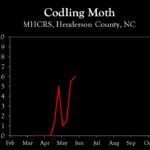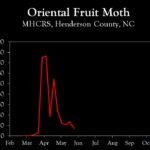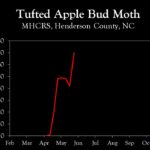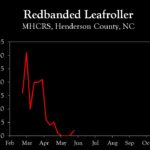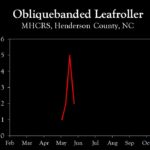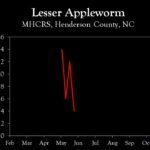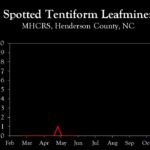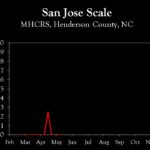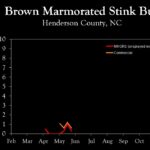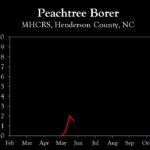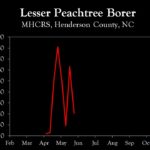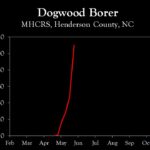WNC Orchard Insect Pest Populations – May 27, 2025
go.ncsu.edu/readext?1074744
en Español / em Português
El inglés es el idioma de control de esta página. En la medida en que haya algún conflicto entre la traducción al inglés y la traducción, el inglés prevalece.
Al hacer clic en el enlace de traducción se activa un servicio de traducción gratuito para convertir la página al español. Al igual que con cualquier traducción por Internet, la conversión no es sensible al contexto y puede que no traduzca el texto en su significado original. NC State Extension no garantiza la exactitud del texto traducido. Por favor, tenga en cuenta que algunas aplicaciones y/o servicios pueden no funcionar como se espera cuando se traducen.
Português
Inglês é o idioma de controle desta página. Na medida que haja algum conflito entre o texto original em Inglês e a tradução, o Inglês prevalece.
Ao clicar no link de tradução, um serviço gratuito de tradução será ativado para converter a página para o Português. Como em qualquer tradução pela internet, a conversão não é sensivel ao contexto e pode não ocorrer a tradução para o significado orginal. O serviço de Extensão da Carolina do Norte (NC State Extension) não garante a exatidão do texto traduzido. Por favor, observe que algumas funções ou serviços podem não funcionar como esperado após a tradução.
English
English is the controlling language of this page. To the extent there is any conflict between the English text and the translation, English controls.
Clicking on the translation link activates a free translation service to convert the page to Spanish. As with any Internet translation, the conversion is not context-sensitive and may not translate the text to its original meaning. NC State Extension does not guarantee the accuracy of the translated text. Please note that some applications and/or services may not function as expected when translated.
Collapse ▲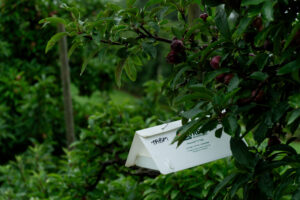 First generation codling moth remains a key pest of concern across the region. Also, the window for tufted apple bud moth control is open in all areas. A smattering of problems with stink bugs has been reported, and we will soon be approaching the time to begin monitoring for key indirect pests.
First generation codling moth remains a key pest of concern across the region. Also, the window for tufted apple bud moth control is open in all areas. A smattering of problems with stink bugs has been reported, and we will soon be approaching the time to begin monitoring for key indirect pests.
Codling moth: The degree-day model indicates that we are in the middle of first generation flight in Henderson County and approaching the end of flight in lower-elevation Cleveland County. If not monitoring for moths using traps and/or mating disruption, it should be assumed that insecticidal control is necessary in Henderson County at this time. In lower-elevation orchards, if an insecticide effective against codling moth has been applied in the past week, in most orchards that should be sufficient for the remainder of this generation. The exception is in those orchards with historically high codling moth populations.
Tufted apple bud moth: The ideal timing for an insecticide application to achieve season-long control of TABM is between about 800 and 1200 DD. TABM DD ranges from about 750 in Henderson County to 955 in Cleveland County, so this next application will provide ideal timing. Insecticides recommended for codling moth are also excellent against TABM (Altacor, Exirel, Verdepryn, Delegate). In areas where codling moth control is not needed, Intrepid at rates as low as 8 oz/acre will provide excellent TABM control.
Other Pests: In at least one orchard at a lower elevation, significant early season damage by brown marmorated stink bug was reported and confirmed. This was feeding by overwintering adults, which typically are not present in numbers high enough to inflict noticeable damage this early. This orchard is apparently in a BMSB hotspot.
Now is also a good time to begin monitoring for common indirect pests, including European red mite, potato leafhopper and green apple aphids.
Learn more about southeastern apple insect pests at the Apple Insect Management page.
2025 Average Weekly Trap Captures
| HENDERSON COUNTY | |||
| Insects per trap | |||
| May 12 | May 19 | May 27 | |
| Codling moth | 1.5 | 5.5 | 6.0 |
| Oriental fruit moth | 10.5 | 13.5 | 7.0 |
| Tufted apple bud moth | 48.0 | 42.0 | 70.0 |
| Redbanded leafroller | 0.0 | 0.0 | 2.0 |
| Obliquebanded leafroller | 2.0 | 5.0 | 2.0 |
| Lesser appleworm | 6.0 | 12.0 | 4.0 |
| Apple maggot (research orchards) | n/a | set | 0.0 |
| Apple maggot (abandoned orchard) | n/a | n/a | 3.0 |
| Brown marmorated stink bug (commercial) | 0.6 | n/a | 0.6 |
| Brown marmorated stink bug (unsprayed research orchard) | 0.3 | 1.0 | 0.3 |
| Spotted tentiform leafminer | 0.0 | 0.0 | 0.0 |
| Dogwood borer | 29.0 | 48.0 | 110.0 |
| Peachtree borer | 0.5 | 2.0 | 1.5 |
| Lesser peachtree borer | 9.0 | 63.0 | 20.5 |
| San Jose scale | 0.0 | 1.7 | 0.0 |
*Note that these averages illustrate only the timing of insect emergence and fluctuations in populations, and are not representative of population levels in any given orchard. The only way to have an accurate assessment of an individual orchard’s populations is to set up traps in that orchard.
2025 Accumulated Degree Days
| HENDERSON COUNTY | ||||
| May 12 | May 19 | May 27 | ||
| Codling moth (Biofix: April 21) | 263 | 391 | 502 | |
| Oriental fruit moth (Biofix: March 17) | 757 | 920 | 1069 | |
| Tufted apple bud moth (Biofix: April 14) | 435 | 598 | 747 | |



